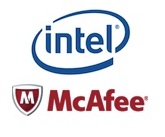McAfee and parent company Intel have developed what they’re calling a “reference implementation” to provide situational awareness and multi-zone protection to segments of the nation’s critical infrastructure.
Similar to other layered approaches from McAfee, the solution or “joint implementation” that has been developed to help protect the energy infrastructure relies heavily on their ePolicy Orchestrator. However, this time Intel is kicking-in some additional juice with its vPro hardware-based security technology and AMT (Active Management Technology).
 Protecting power delivery systems isn’t as easy as one would think, mostly due to their complexity and diversity.
Protecting power delivery systems isn’t as easy as one would think, mostly due to their complexity and diversity.
Most of the power delivery infrastructure is comprised of networks that can’t be secured by simply adding technologies on top of one another. Moreover, many of the power grids aging assets predate the Internet, so they’re particularly vulnerable. Substations, known as one of the most vulnerable parts of the smart grid, are also at risk from attack, McAfee says.
McAfee and Intel worked-up a “reference implementation” that integrates a number of security offerings relevant to substations and network operations centers, layered on top of selected Intel processors and hardware-based security and manageability technologies.
Along with sharing the protection plans, McAfee outlined some of the challenges associated with protecting the energy infrastructure:
• Multiple zones include: Corporate IT, SCADA, and device networks: Each different zone has unique technical challenges.
• Coping with “big data” overload: Security devices on the network produce incredibly large number of logs, overwhelming stretched IT departments.
• Simplifying endpoint manageability and improving visibility: Energy endpoints are spread geographically and rarely updated and many times lack the ability to detect or communicate and identify a security breach. Device failures can be costly especially when they require updates if not properly managed.
• Providing the right security context for the grid: Standard IT products don’t have the right features to identify issues within the energy infrastructure or don’t understand the unique utility lexicon making it difficult to apply specialized measures need for control systems.
“To adequately secure critical systems against cyber attacks, the right products and technologies must be integrated into the entire infrastructure—from the enterprise, to the SCADA and control systems, and even to the automated device networks—without impacting reliability or interfering with operations.” Eric Knapp, critical infrastructure expert at McAfee.
More information is available here.
Related Reading: A New Cyber Security Model for SCADA
Related Reading: Are Industrial Control Systems Secure?
Related Reading: How to Make the Smart Grid Smarter than Cyber Attackers
Related Reading: The Increasing Importance of Securing The Smart Grid
Related Reading: Stuck on Stuxnet – Are Grid Providers Prepared for Future Assaults?













